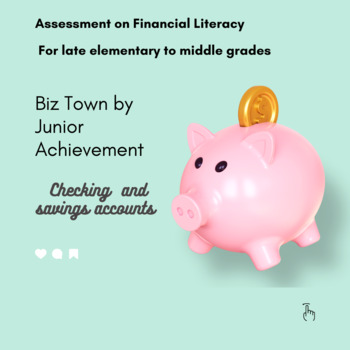Biz Town by Junior Achievement Assessment of Knowledge
Writing Rules-Where Old and New School Meet
6 Followers
Grade Levels
4th - 7th
Resource Type
Standards
CCSSK.CC.A.1
CCSSMP4
Formats Included
- Google Forms™
Writing Rules-Where Old and New School Meet
6 Followers

Made for Google Drive™
This resource can be used by students on Google Drive or Google Classroom. To access this resource, you’ll need to allow TPT to add it to your Google Drive. See our FAQ and Privacy Policy for more information.
Description
Have your students just visited Biz Kids? Will they visit and want a pre-test to assess knowledge? This is great for late elementary and early middle school students in assisting their growth as financially literate individuals. It also possesses explanations of why certain answers are better than others.
Total Pages
Answer Key
Included
Teaching Duration
N/A
Last updated Feb 12th, 2023
Report this resource to TPT
Reported resources will be reviewed by our team. Report this resource to let us know if this resource violates TPT’s content guidelines.
Standards
to see state-specific standards (only available in the US).
CCSSK.CC.A.1
Count to 100 by ones and by tens.
CCSSMP4
Model with mathematics. Mathematically proficient students can apply the mathematics they know to solve problems arising in everyday life, society, and the workplace. In early grades, this might be as simple as writing an addition equation to describe a situation. In middle grades, a student might apply proportional reasoning to plan a school event or analyze a problem in the community. By high school, a student might use geometry to solve a design problem or use a function to describe how one quantity of interest depends on another. Mathematically proficient students who can apply what they know are comfortable making assumptions and approximations to simplify a complicated situation, realizing that these may need revision later. They are able to identify important quantities in a practical situation and map their relationships using such tools as diagrams, two-way tables, graphs, flowcharts and formulas. They can analyze those relationships mathematically to draw conclusions. They routinely interpret their mathematical results in the context of the situation and reflect on whether the results make sense, possibly improving the model if it has not served its purpose.


